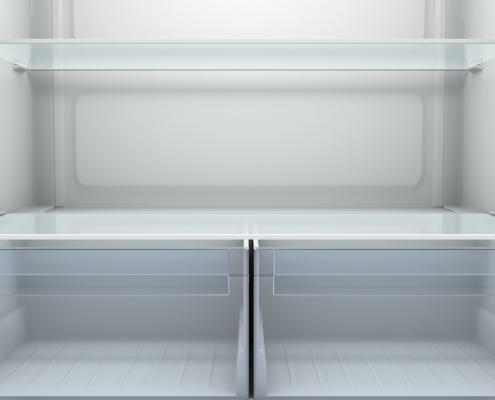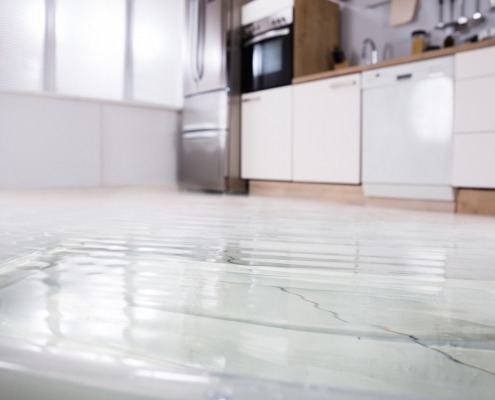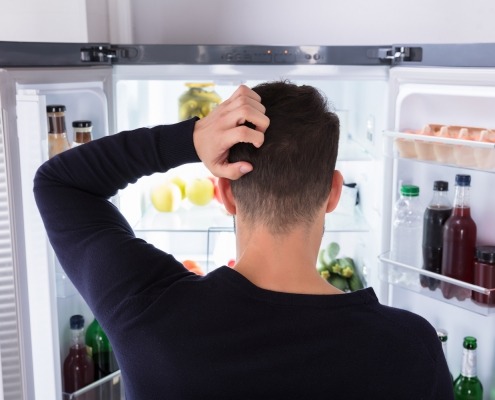Troubleshooting slow water flow from a refrigerator dispenser
Steven E / Monday April 21, 2025
A sluggish water flow from your refrigerator dispenser can make filling up glasses a real hassle. But don’t worry, there are some simple troubleshooting steps you can take to get things flowing smoothly again. We’ll walk you through the common culprits behind that sluggish water flow and show you how to fix them yourself, like a Pro!
If you need any replacement parts for your appliance, you can enter your model number at AppliancePartsPros.com to order them. Most orders arrive in just two business days, and we have thousands of free guides to show you how to install your new parts.
The information in this article may not apply to your specific appliance model. We recommend consulting your manufacturer’s documentation or contact us with any questions.
Clogged water filter
A clogged water filter is one of the most common reasons for slow water flow from a refrigerator dispenser. The water filter is responsible for removing impurities and contaminants from the water, but over time, it can become clogged with sediment and debris, restricting the flow of water.
To fix a clogged water filter, follow these steps:
- The water filter is usually located in the bottom of the refrigerator, either in the front or back. Check your refrigerator’s user manual or consult the manufacturer’s website if you’re not sure where the filter is located.
- Locate the shut-off valve for the water supply and turn it clockwise to shut off the water.
- Pull out the filter and inspect it for any visible debris or sediment. If the filter is clogged or past the manufacturer recommended replacement time frame, replace it with a new one.
- Use a soft brush or cloth to clean any ice or debris from the filter housing and tubing connected to it.
- Insert the new filter and make sure it’s properly seated.
- Turn the shut-off valve counterclockwise to turn on the water supply.
- Fill a glass with water from the dispenser and check for any improvements in water flow.
Mineral buildup in the dispenser
Mineral buildup in the dispenser is another common cause of slow water flow. Over time, minerals in the water can accumulate and form deposits in the dispenser, restricting the flow of water. This issue is more common in areas with hard water, which contains higher levels of minerals such as calcium and magnesium.
To fix mineral buildup in the dispenser, follow these steps:
- Descale the dispenser: Use a descaling solution specifically designed for refrigerator dispensers to remove mineral deposits. You can find these solutions at most hardware stores or online. Follow the instructions on the product label for proper use.
- Soak the dispenser: Fill a large bowl with equal parts water and white vinegar. Soak the dispenser in the solution for several hours or overnight. This will help loosen mineral deposits and make them easier to remove.
- Scrub the dispenser: Use a soft-bristled brush or a scrub brush to scrub away any visible mineral deposits on the dispenser. Be gentle to avoid scratching the surface.
- Rinse and dry: Rinse the dispenser thoroughly with water and dry it with a soft cloth.
- Check the water flow: Fill a glass with water from the dispenser and check for any improvements in water flow.
Low water pressure
Low water pressure is another common cause of slow water flow from a refrigerator dispenser. If the water pressure is too low, it can cause the water to flow slowly or even stop flowing altogether. This issue can be caused by a variety of factors, including a clogged water supply line, a faulty water pump, or a low water pressure setting. To fix low water pressure, follow these steps:
- Make sure the water supply line is clear of any blockages or kinks that could be causing the low water pressure.
- The water inlet valve can be tested for continuity using a multimeter. If the valve is faulty or the inlet screen is dirty, it may not be able to provide enough pressure to force water through the dispenser. In this case, you may need to replace it.
- Check the water supply line and connections for any leaks that could be causing the low water pressure.
- If the refrigerator has a water reservoir in the refrigerator section check it for any leaks or ice obstructions.
If none of the above steps solve the issue, it may be a problem with the refrigerator’s plumbing system or the water source itself.
Malfunctioning dispenser
A malfunctioning dispenser can also cause slow water flow from a refrigerator dispenser. The dispenser may be clogged, have a faulty solenoid, or have a blockage in the water line. To fix a malfunctioning dispenser, follow these steps:
- Check the water line and dispenser for any blockages or debris. Remove any blockages or debris that you find.
- Use a soft brush or cloth to clean the dispenser and remove any mineral buildup, debris or ice.
- If the dispenser has a solenoid or switch, test it to see if it is working properly. If it is not, you may need to replace it.
- Check the water line and dispenser for any leaks. If you find a leak, repair it by tightening any loose connections or replacing the affected part.
- If none of the above steps solve the issue, you may need to replace the dispenser entirely.
Frozen water line in the door
It’s possible that the water line leading to the dispenser may freeze. This can cause the water to flow slowly or not at all. To fix a frozen water line in the door, follow these steps:
- Locate the shut-off switch for the ice maker and water dispenser, and turn it off. This will prevent any more water from flowing through.
- Apply heat to the inner door panel using a hair dryer on a low setting. Be careful not to overheat it, as this can cause damage to the panel.
- Adjust the refrigerator to a warmer temperature or leave the door open to warm it.
- Once the line has thawed, check for any kinks or blockages at the water line connection to the door. Straighten out any kinks and remove any blockages.
- Make sure the door seal and dispenser door are in good condition and aren’t allowing cold air to enter the refrigerator. A damaged or loose seal can cause the water line to freeze.
Additional information
Thank you for reading! We hope you found this information useful to get your dispenser working again.
If you have any other appliance repair needs or projects, don’t hesitate to explore our thousands of free videos and troubleshooting guides available. If you need replacement parts or some extra help with ordering them, grab your model number and head over to AppliancePartsPros.com, where you can chat with a pro, read our DIY blog and more.
Be sure to subscribe to us on YouTube and follow us on Facebook, Twitter and Instagram!
With nearly a decade of experience in providing top-notch customer service regarding appliance parts and repair, Steven enjoys sharing practical advice, troubleshooting tips, and interesting information to help readers stay informed.





